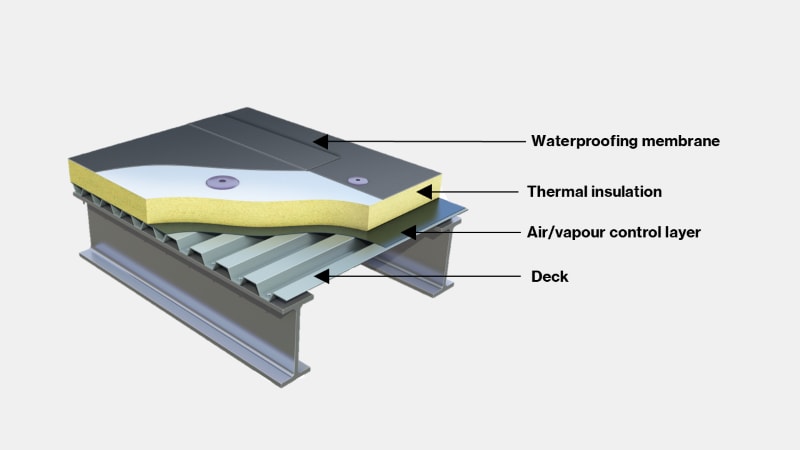
Should fasteners penetrate an AVCL on a flat roof?
- Read time: 3.5 minutes
- Date: 11 Oct 2021
- Flat Roofing
On any roof it is important to consider condensation and air leakage. On a flat roof (warm roof construction) condensation and air leakage are controlled by using an Air & Vapour control layer (AVCL). An AVCL is normally manufactured from either polythene, reinforced bitumen or a metal foil laminate.
According to the SPRA Design Guide 2020:
The Building Regulations Approved Documents C (AD C) sets mandatory requirements in respect of the control of condensation, which should be designed and constructed in accordance with BS 5250 and BS EN ISO 13788.
Approved Document L of the Building Regulations states the relevant requirements for airtightness in buildings.
In a warm roof, the AVCL is placed above the deck and on the underside of the insulation. The AVCL is either loose laid, self-adhered or torch-on depending on the type of AVCL, type of deck and/or building design.

The full design guide can be downloaded for free at SPRA
Does mechanical fixing compromise the AVCL?
If the AVCL helps to keep moisture out of the roof build up, you may question whether you can penetrate the layer with fasteners. To answer this question, it is useful to refer to the SPRA Design Guide 2020 again:
…the AVCL is never totally resistant to moisture vapour transmission or air permeability. A small quantity of water vapour passing through the membrane itself or at joints will pass through the insulation system and condense on the cold underside of the waterproof membrane.
Design calculations take account of this process by ensuring that there is no accumulation of condensate within the system over a complete annual cycle of winter condensation and summer evaporation.
In mechanically fastened systems, the fasteners penetrate the AVCL. However, research and many years’ experience has shown that the combination of pressure from the fastener and sealing around the AVCL effectively stops any significant permeability by this process.
What checks should be made before fixing through the AVCL?
Mechanical fastening will not affect vapour integrity, but insulation and membrane manufacturers should always be consulted in designs for high humidity interiors.
All the evidence shows that the most important factor in keeping moisture out, limiting air leakage and ensuring AVCL integrity is the quality of the seal. During installation, attention should be paid to the laps and interfaces to adjoining elements, such as parapet walls or penetrations.





